A 19th Century Trophy Shield.
Jan 13, 2013 12:47:25 GMT
Post by Uhlan on Jan 13, 2013 12:47:25 GMT

Henry II of France.
This review will not be of weapons, but about an implement no self respecting 19th century weapons collector could have done without: The Trophy Shield.
A good many of the emerging middle class used these as a symbol of having arrived, of having a connection with the past, an elevation of their social status.
The shields where often displayed in the entrance hall, so visitors could take note and reflect, one hoped, upon the long history of the family.
Some found their way into libraries, above fireplaces and of course the weapons room.
In the 19th century a whole industry emerged to cater to the craving to connect to the past, fuelled by the neo Gothic, the neo Renaissance and the neo Classical movements of the time and many a weapons collector bought swords and rapiers that where expertly faked since most of the real stuff was still in the collections of the Noble Houses. What happens when there is a market for these objects and no merchandise? Well, expert craftsmen like the super notorious Herr Anton Konrad made sure the collectors got what they wanted. His excellent products still faze many an unsuspecting collector even to this day and are in fact sought after collectibles in their own right.
And a major invention in 1838 also helped to cater to this desire: Electrotyping.
With this technique it is possible to copy anything, one on one and at reasonable cost. Important Gothic, Renaissance and Classical objects from museum and private collections were copied and sold in the market and still turn up in the antiques market as the genuine article. With the patina of over a hundred years it looks good enough to fool many.
So, now the word Electrotyping has fallen, we are getting somewhere.
A couple of weeks ago I roamed through the offerings at Empire Costume, the excellent , to go to, establishment of Mr. Guinhot and listed in the Napoliontic swords section I found this shield.

66x44 cm.
I did not know how to place it. It had Renaissance written all over it, only for the price listed that would be to much to ask, but on the other hand it was obviously an antique, so what the hell , I bought it.
With the photos from the website downloaded I started a search and found some interesting facts. For one, this was a facsimile of a Renaissance Parade shield. That is rather nice to know, but the question remained: who's was it supposed to be?
Than I found this shield, a Parade Shield of Henry II of France.
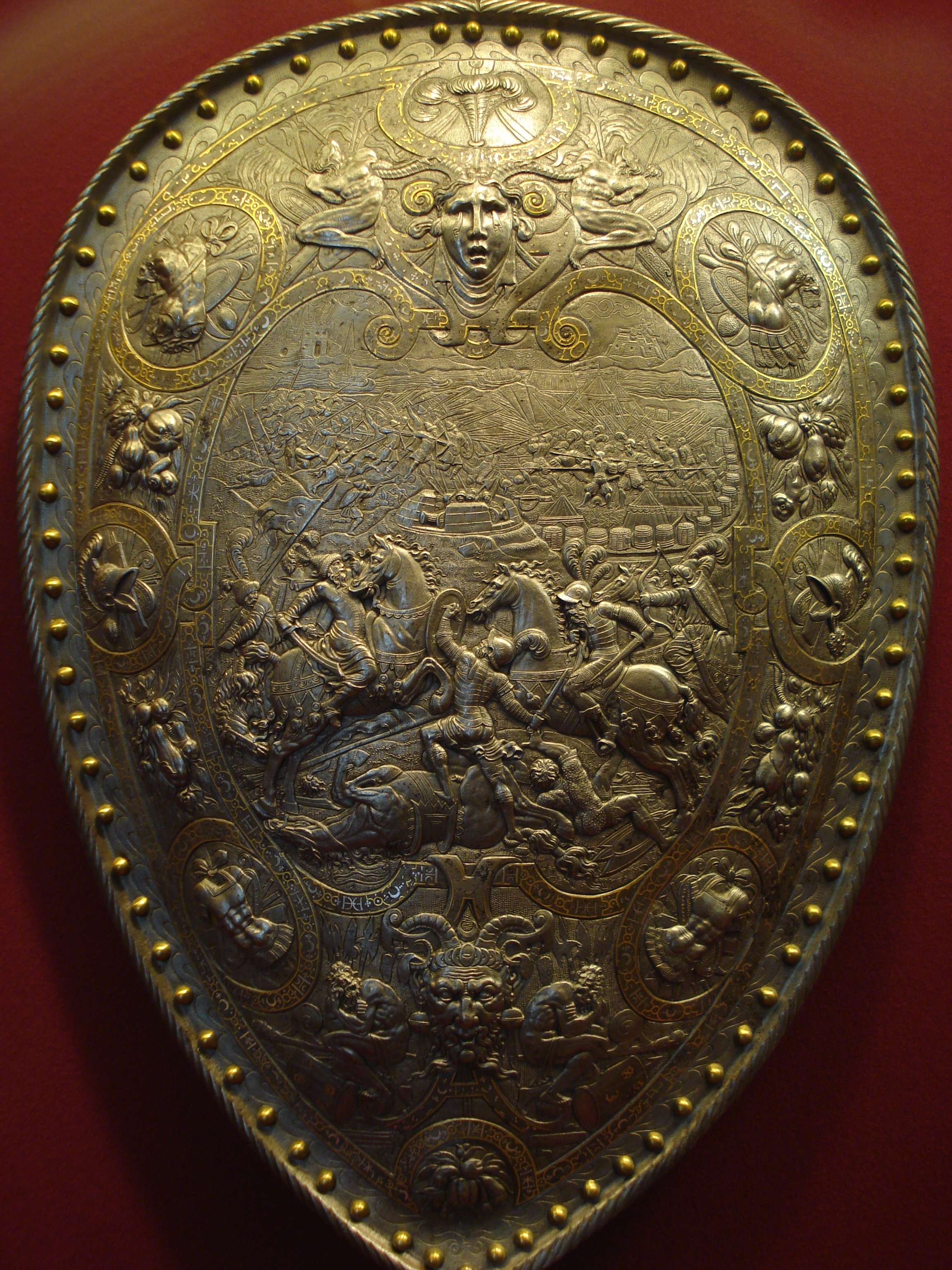
Well, the border on this shield is almost the same and the general design fitted in with mine, but I was not convinced the maker would combine two patterns, the border of Henry"s shield with a middle design lifted from some other piece, or made a design of his own for the middle part. So I decided to wait for the shield to arrive before drawing further conclusions.
Alas, I do not have a picture of the back of the shield, but when I had it home it immediately became clear what was going on.
There are no hammer marks on the back, in fact no marks at all. Only high and low places, low where the front displays high relief. The back gives a molten like appearance, kind of flowing.
Thus was the connection laid to Electrotype. The absence of tooling marks and the molten appearance made this obvious.
One question remained though: where did they copy my shield from? Electrotyping is about economy and combining two molds is costly, so somewhere out there there must be a shield just like mine.
Oh yes, there was! Yesterday I found it, the companion piece to Henry's shield above:
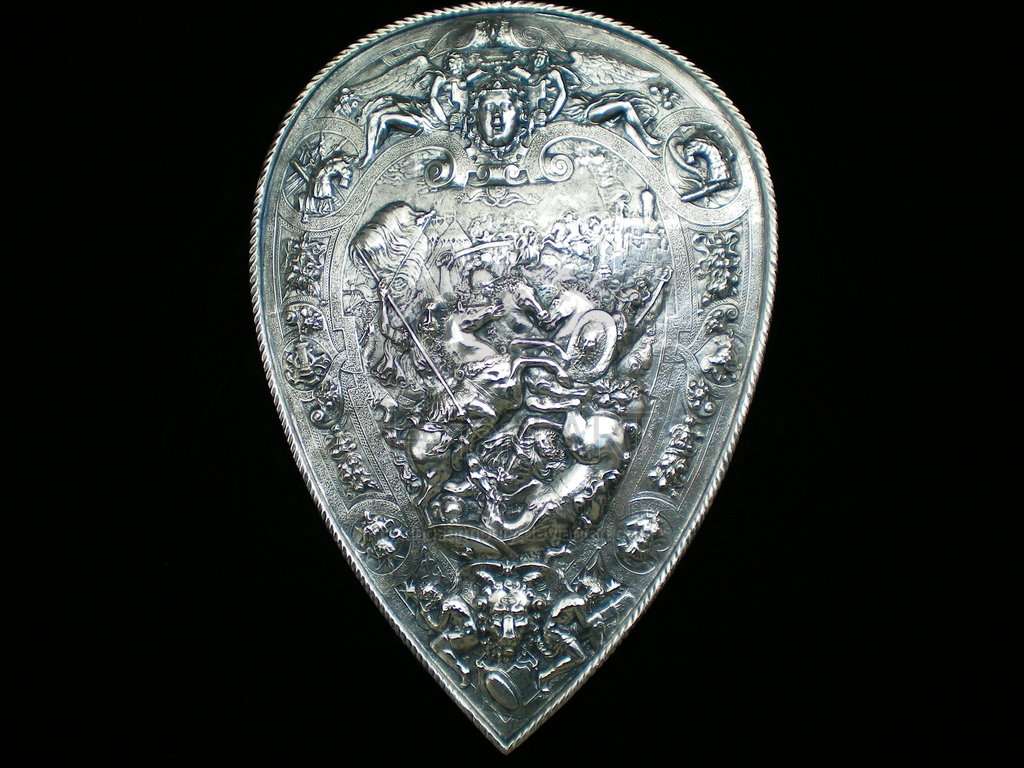
So, after some weeks of roaming the web I can conclude the following: My shield is an Elektrotype copy of a Renaissance Parade shield of Henry II, made in the last half of the 19th century, when the neo styles were at their heights.
Though my piece is somewhat lacking in the rendering of the finer detail, which may lead to the conclusion the mold was getting on a bit, the overall condition is very good, the relief very high and the patina of a quality one comes to expect of a 19th century piece that was cleaned every now and then by overly active chambermaids. I like it a lot.
To show you what was possible with Electrotyping I insert some pictures here:
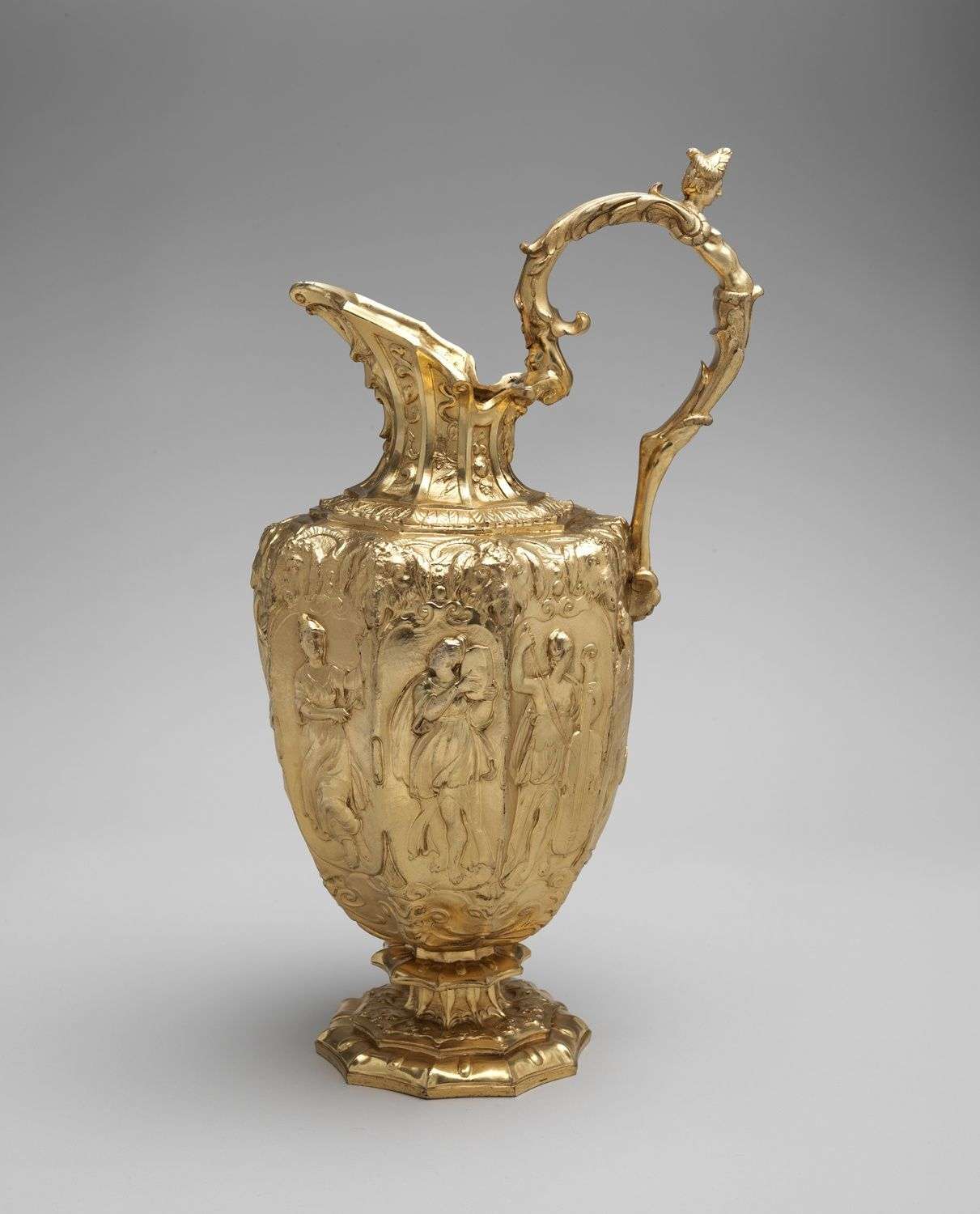
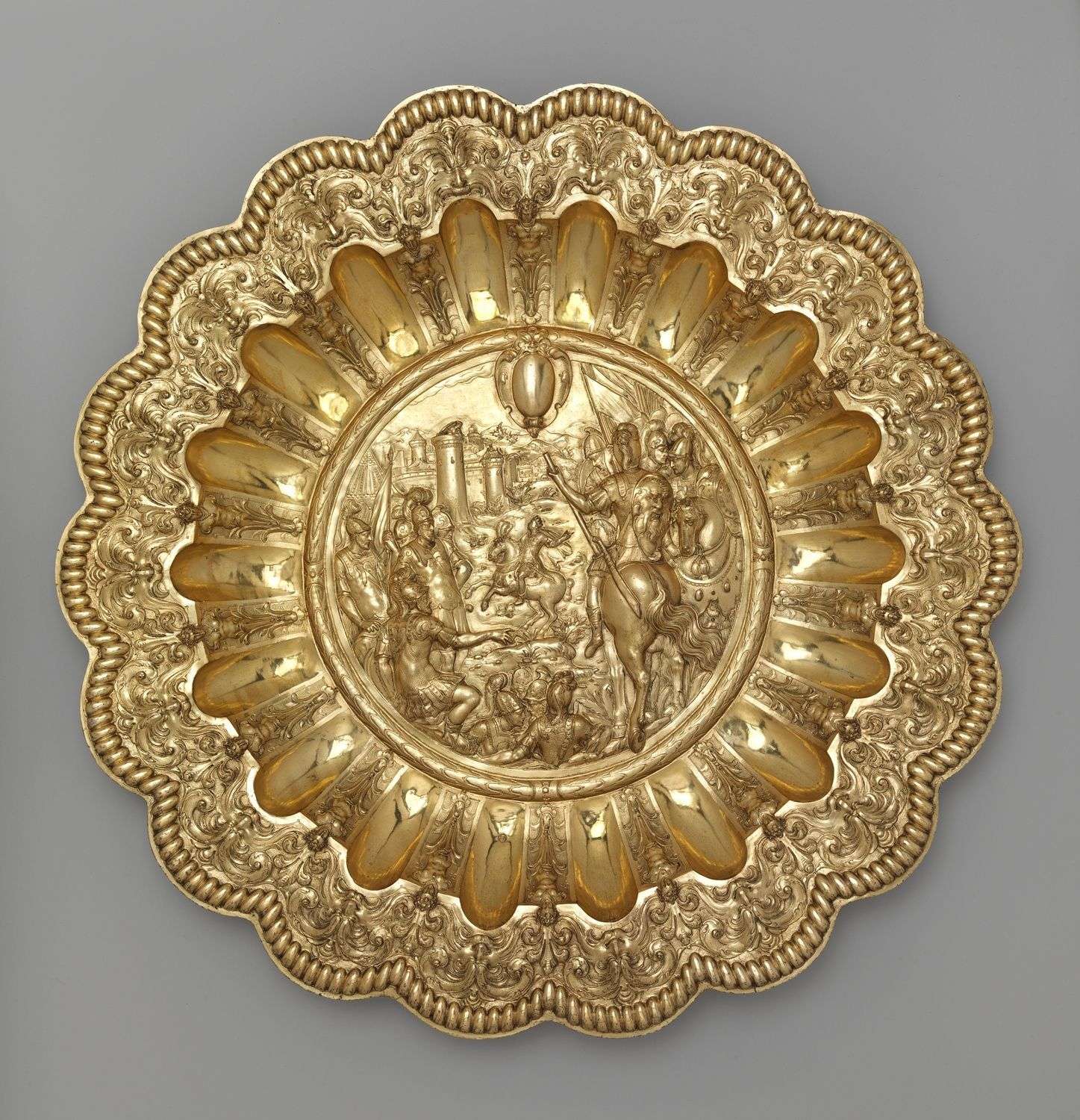
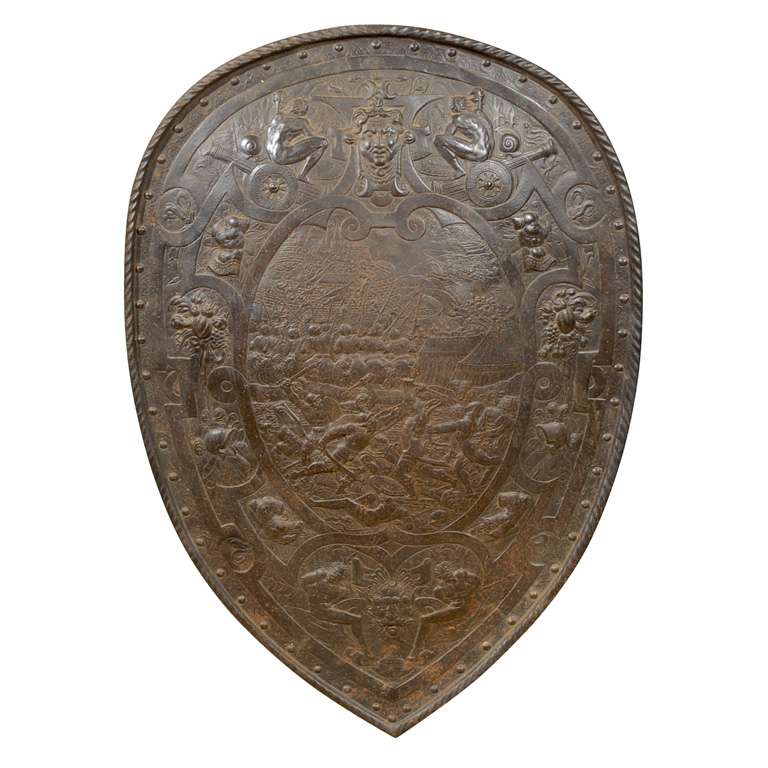
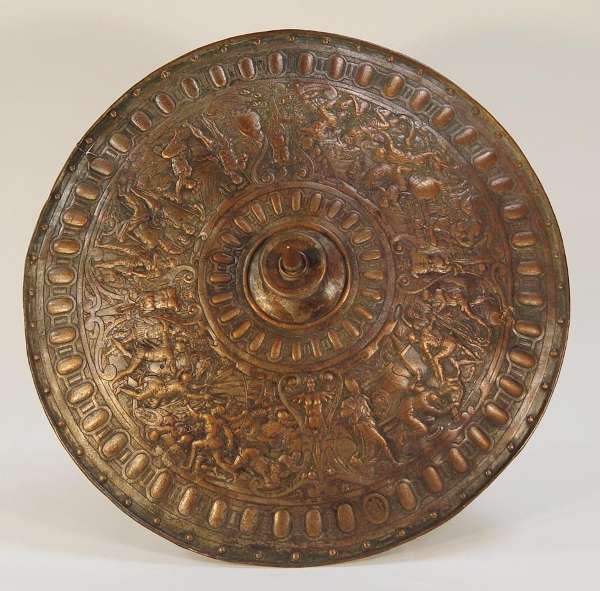

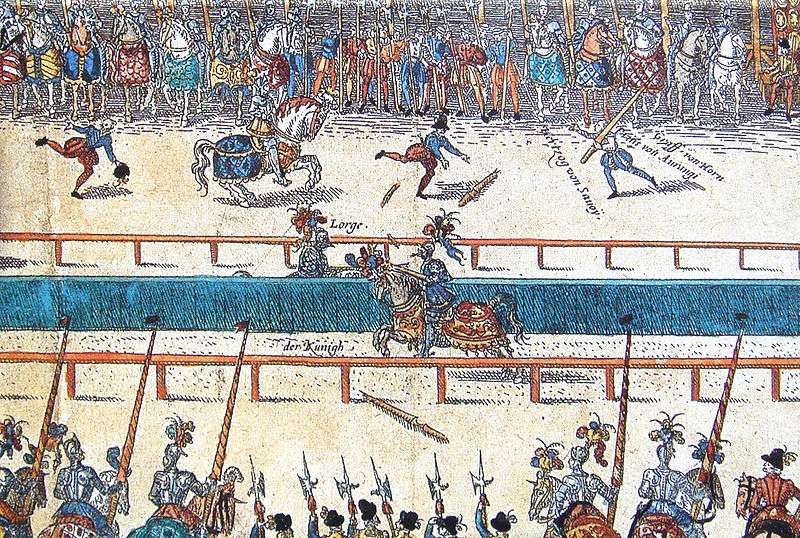
Henry's last Joust. His wounds became infected and did him in.
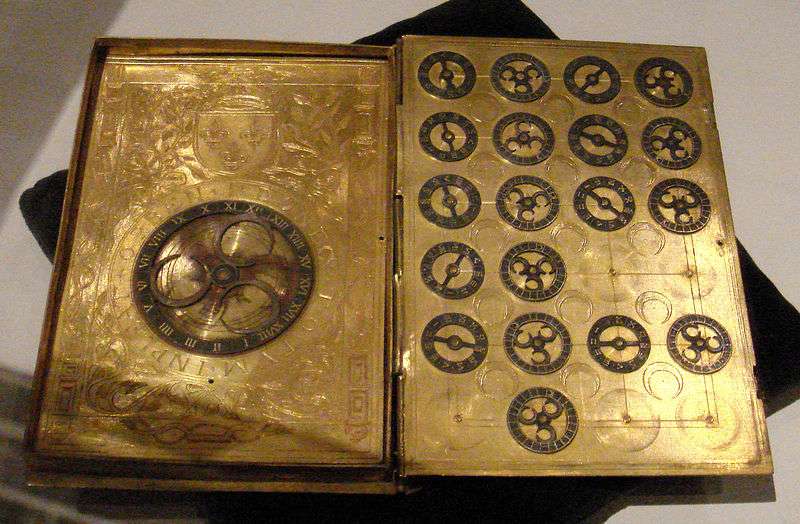
A Renaissance computer in the form of a book, with the Arms of Henry II.
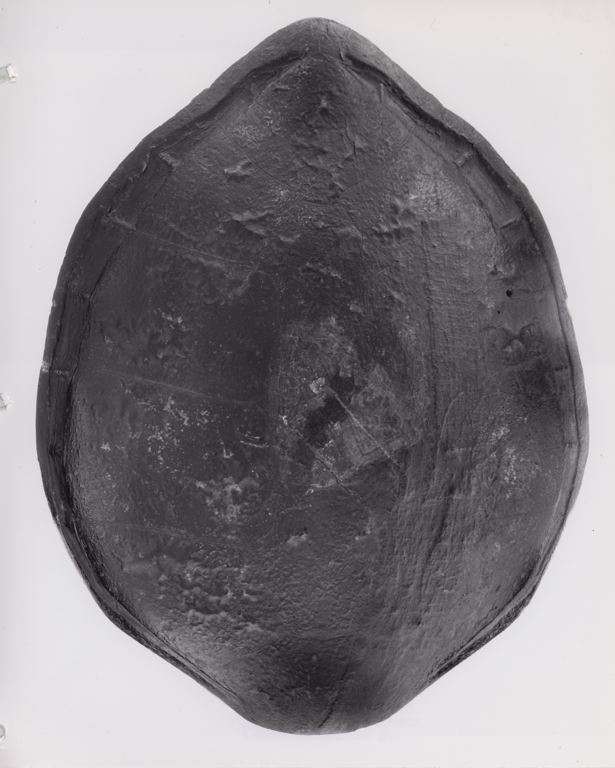
A Renaissance Parade Shield made of leather, canvas and paint in the form of a huge turtle shell.
At the time turtle shell was super expensive. A Renaissence version of Electro Type?
Notes:
Electro Type: en.wikipedia.org/wiki/Electrotype
About Henry II: en.wikipedia.org/wiki/Henry_II_of_France










